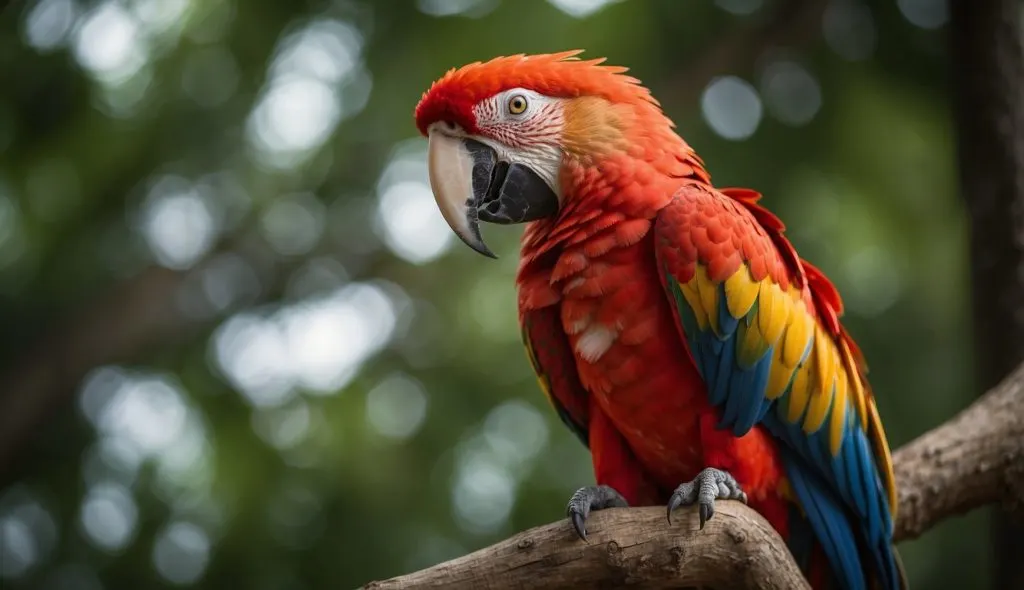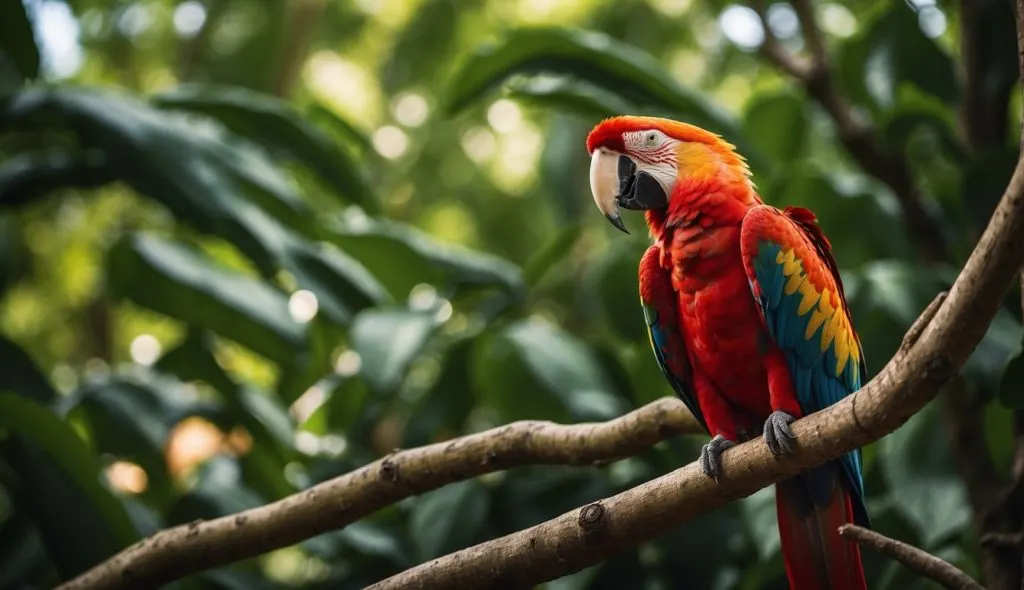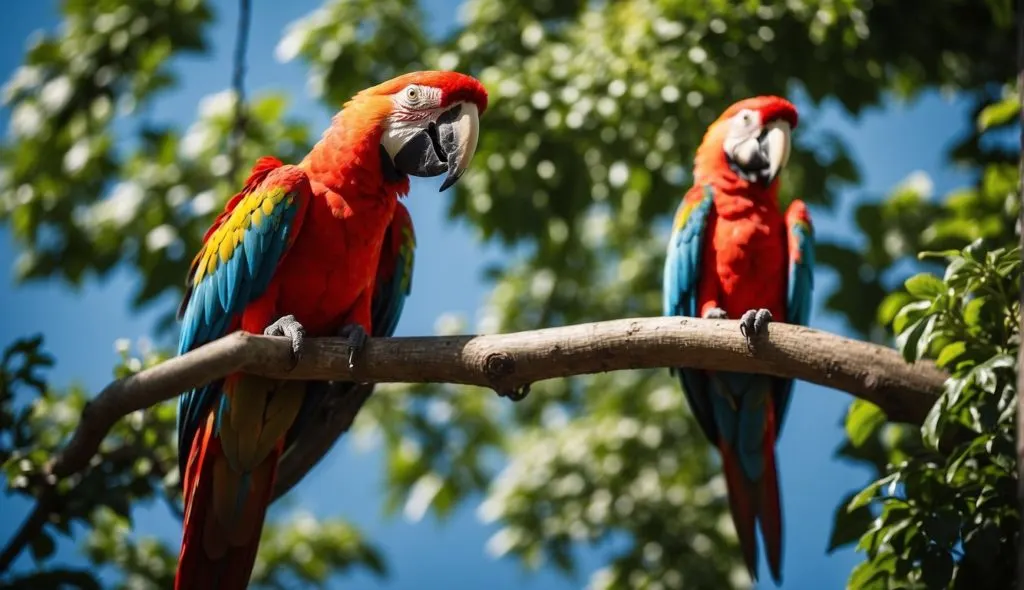Celebrating the vibrancy and splendor of one of the most magnificent birds, Scarlet Macaw Day is a chance for you to immerse yourself in the colorful world of a species that is as charismatic as it is important to our planet’s biodiversity. With their striking red, yellow, and blue plumage, scarlet macaws are a brilliant sight to behold. These parrots are not just a feast for the eyes; they play a crucial role as seed dispersers in their native habitats of Central and South American rainforests.

When is Scarlet Macaw Day?
Scarlet Macaw Day is celebrated every year on June 28. This bird day was established by the government of Honduras to honor its national bird.
This bird day specifically aims to highlight the importance of the species, its conservation, and the threats it faces in the wild.
On this day, you’re encouraged to learn about the scarlet macaw, whose scientific names are Ara macao cyanoptera and Ara macao macao for its Central and South American subspecies, respectively. As one of the largest parrots, they command attention with their size, often reaching lengths close to 35 inches, and can live a long life, with many enjoying a lifespan of 40 to 50 years or more in the wild. Conservation is a key focus of Scarlet Macaw Day, as these birds face threats from habitat loss and illegal pet trade.
Fun Facts about Scarlet Macaws

- Size Matters: A Scarlet Macaw can grow to nearly 3 feet in length, with about half of that being its striking tail!
- Vivid Colors: You’ll spot them with bright red, blue, and yellow plumage. They’re a kaleidoscope of color in the already colorful world of birds.
- Long-Lived Birds: These parrots can live up to 50 years, and sometimes longer in captivity.
- Heavy Weighers: They tip the scale around 2.2 pounds, give or take a little.
- Impressive Wingspan: Stretching their wings, they reach about a meter across.
- Diet: The Scarlet Macaw feasts on fruits, nuts, and seeds; they also munch on clay to detoxify their food.
- Chatty Companions: They’re known for their loud calls, which can be heard miles away.
- Clever Creatures: Scarlet Macaws are incredibly smart, often showing cognitive skills rivaling those of young children.
- Monogamous: These parrots pair for life, finding a mate and sticking with them through thick and thin.
- Nesting Habits: These birds nest high in the trees in cavities to keep their young safe from predators.
- Population Status: Luckily, they are of “Least Concern”, meaning they are not immediately threatened.
- Social Birds: In the wild, you’ll find them in groups, adding to their safety in numbers.
- Wing Coordination: They’re agile in flight, thanks to synchronized wing beats.
- Habitat: Typically, they call the rainforests of Central and South America their home.
- Parental Care: Both parents take turns looking after the eggs, which hatch after about 24 to 28 days.
- Fertility: A pair usually brings 2 to 4 eggs into the world at a time.
- Fledgling Phase: Young macaws stay with their parents for up to a year.
- Chewers: They love to chew; their strong beaks can easily crack nuts and seeds which are part of their diet.
- Cultural Symbol: The Scarlet Macaw is an important symbol in many indigenous cultures, revered for its beauty and intelligence.
How to Observe Scarlet Macaw Day

Scarlet Macaw Day is a perfect occasion to celebrate and raise awareness about these vibrant and majestic birds. Here’s how you can participate:
- Visit a Bird Sanctuary: Check out local wildlife preserves or bird sanctuaries that host Scarlet Macaws. Observing these birds in a habitat close to their natural surroundings is both educational and thrilling.
- Educate Yourself and Others: Learn about Scarlet Macaw conservation efforts and share your knowledge. Use resources like books, documentaries, and reputable online articles to gather facts.
- Support Conservation Projects: Donate to conservation projects or adopt a macaw through a wildlife charity. Your contribution can help protect these birds and their habitats.
- Art and Social Media: Draw attention to Scarlet Macaw Day by creating macaw-themed art or sharing pictures and information on social media with the hashtag #ScarletMacawDay.
More Bird Holidays
You also might enjoy:
- Does Bird Seed Expire? - May 11, 2024
- How Big Are Baby Hummingbirds? - May 5, 2024
- How to Prevent Mold in Hummingbird Feeder - May 2, 2024
